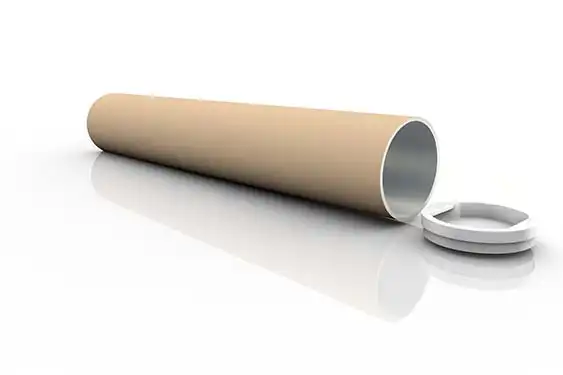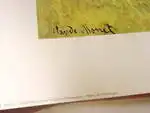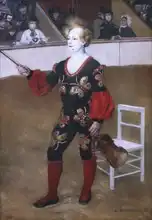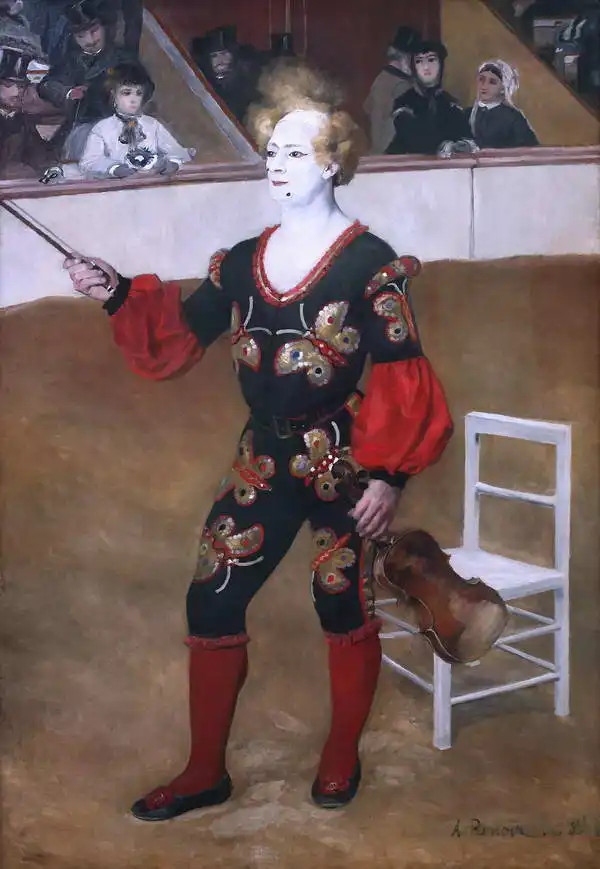About this finishing
Print. The image is printed on the top quality 10-ink HP Z9PS printer on HP matte 270 g / m2 paper. You can choose any size to an accuracy of 1 cm. A margin of 5 cm around the image is added to the size of the motif.


You can find a detailed description about our finishings
here.
Clown
Date:
1868The painting shows a clown in a traditional costume standing in the middle of a circus arena. The clown has white make-up on his face and nicely combed hair. He is dressed in a brightly coloured costume with embroidery reminiscent of masquerade motifs. In his hand he holds a thin stick. In the background, spectators watching the show are visible. Some are dressed in elegant dresses and hats. The scene seems to capture a snapshot of a performance in times past.
This description was created by artificial intelligence, please be indulgent.
Renoir painted picture Clown in 1868. Prevailing color of this fine art print is vivid and its shape is portrait. This image is printed on demand - you can choose material, size and finishing.
Pierre Auguste Renoir (1841-1919). One of the greatest French
Impressionists. He painted modestly, humbly studying the works of other painters. His paintings are spontaneous and full of loose, fine brush strokes. Courbet inspired him to depict everyday scenes of ordinary people and Corot influenced Renoir by his love of nature and the use of subtle tones. However, Renoir was most influenced by
Manet, who is known for his colourfulness, small spatial depth and broad brushstrokes.
Renoir’s images are direct, capturing the optimistic atmosphere of Parisian streets and cafes. His nudes are known for their purity, fineness, and the play of light on the human body. Among his best-known works are
The Swing (capturing a beloved courting scene, a festive moment, full of colour and light),
Moulin de la Galette (a symbol of Impressionism showing an open-air summer dance festival),
Luncheon of the Boating Party (an idealized portrait of Renoir’s friends, including his future wife). The image shows the abandon of the upper classes and their leisure time. Among his prized paintings is a series of three paintings
Dance in the Country, Dance in Bougival and
Dance in the City (in which he masterfully painted movement and the atmosphere of dance).


